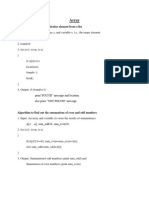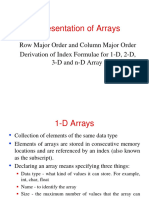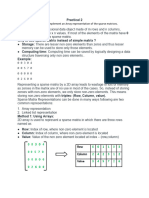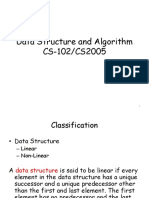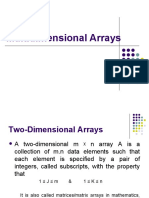0% found this document useful (0 votes)
51 views18 pages2D Arrays for Computer Science Students
This document discusses two-dimensional arrays. It defines a 2D array as an array of arrays organized in a rectangular format of rows and columns. It explains how to calculate the size of a 2D array and describes how 2D arrays are stored in memory in either row major order or column major order, with formulas provided to calculate the memory location of any element.
Uploaded by
Abdul WahabCopyright
© © All Rights Reserved
We take content rights seriously. If you suspect this is your content, claim it here.
Available Formats
Download as PPTX, PDF, TXT or read online on Scribd
0% found this document useful (0 votes)
51 views18 pages2D Arrays for Computer Science Students
This document discusses two-dimensional arrays. It defines a 2D array as an array of arrays organized in a rectangular format of rows and columns. It explains how to calculate the size of a 2D array and describes how 2D arrays are stored in memory in either row major order or column major order, with formulas provided to calculate the memory location of any element.
Uploaded by
Abdul WahabCopyright
© © All Rights Reserved
We take content rights seriously. If you suspect this is your content, claim it here.
Available Formats
Download as PPTX, PDF, TXT or read online on Scribd
/ 18


